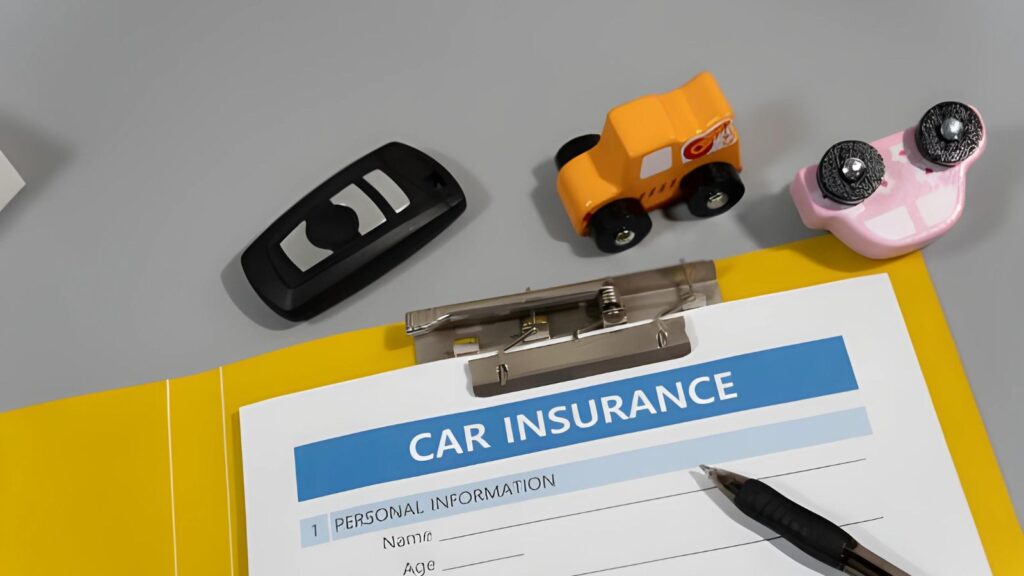Introduction
Car insurance is a necessary expense for every vehicle owner, but that doesn’t mean you have to break the bank to get good coverage. By understanding the factors that affect car insurance rates and implementing smart strategies, you can find affordable car insurance that meets your needs and maximizes your savings. In this comprehensive guide, we’ll explore the top tips for securing affordable car insurance, answer common questions, and provide actionable advice to help you save money.
Understanding Car Insurance
What is Car Insurance and Why Do You Need It?
Car insurance is a contract between you and an insurance company that protects you against financial loss in the event of an accident or theft. The main types of car insurance coverage include:
- Liability Coverage: Pays for injuries and damages you cause to others in an accident.
- Comprehensive Coverage: Covers non-collision-related incidents like theft, fire, or natural disasters.
- Collision Coverage: Pays for damage to your car resulting from a collision, regardless of fault.
- Personal Injury Protection (PIP): Covers medical expenses for you and your passengers, regardless of fault.
- Uninsured/Underinsured Motorist Coverage: Protects you if you’re involved in an accident with a driver who lacks sufficient insurance.
Car insurance is not only a legal requirement in most states, but it also provides critical financial protection. Without it, you could be responsible for significant out-of-pocket expenses following an accident. According to the Insurance Information Institute, nearly every state mandates some form of liability coverage to ensure that drivers can cover the costs of damages or injuries they cause.
Factors Affecting Car Insurance Rates
Several factors influence your car insurance premiums. Understanding these can help you make informed decisions and find ways to lower your costs:
- Age and Driving Experience: Younger drivers and those with less experience typically pay higher premiums due to their higher risk of accidents.
- Vehicle Make and Model: Cars with high safety ratings and lower theft rates often cost less to insure.
- Location: Urban areas with higher traffic density and crime rates can lead to higher premiums compared to rural areas.
- Driving Record: A clean driving history with no accidents or traffic violations usually results in lower rates.
- Credit Score: Insurers in many states use credit scores to help determine premiums. A higher credit score can lead to lower rates.
- Usage of Vehicle: How often and how far you drive can impact your insurance costs. Commuting long distances typically increases premiums.
Tips for Finding Affordable Car Insurance

How to Shop for Car Insurance
Shopping for car insurance can be overwhelming, but these strategies can help simplify the process and ensure you get the best deal:
- Compare Quotes from Multiple Insurers: Rates can vary significantly between companies. Use online comparison tools to gather quotes from several insurers.
- Utilize Online Comparison Tools: Websites like The Zebra and NerdWallet allow you to compare policies and prices side by side.
- Work with Insurance Brokers: Brokers can provide personalized assistance and help you find policies that match your needs and budget.
Discounts to Look For
Taking advantage of discounts can significantly reduce your car insurance premiums. Common discounts include:
- Safe Driver Discounts: Rewarding drivers with clean records.
- Multi-Policy Discounts: Bundling home and auto insurance.
- Good Student Discounts: For students with good grades.
- Low Mileage Discounts: For drivers who don’t drive often.
- Vehicle Safety Features Discounts: For cars equipped with advanced safety features.
By understanding these factors and shopping around, you can find an affordable car insurance policy that doesn’t sacrifice coverage. In the next sections, we’ll delve deeper into more strategies and tips to help you maximize your savings.
Adjusting Your Coverage
Assessing Your Coverage Needs
It’s essential to evaluate your car insurance coverage regularly to ensure you’re not overpaying for unnecessary protections or leaving yourself underinsured. Here’s how you can assess your coverage needs:
- Determine Essential Coverage: Liability insurance is mandatory in most states, but the minimum required coverage might not be enough. Assess your financial situation and assets to determine if you need higher liability limits.
- Evaluate Comprehensive and Collision Coverage: If your car is older and has a low market value, you might consider dropping comprehensive and collision coverage, which can significantly reduce your premiums.
- Consider Personal Injury Protection (PIP): Depending on your health insurance and the likelihood of passengers in your car, decide whether you need PIP coverage.
Dropping Unnecessary Coverage
One of the quickest ways to reduce your car insurance premiums is by eliminating unnecessary coverage. Here are some scenarios where you might consider dropping certain types of coverage:
- Old Vehicles: If your car is worth less than the annual cost of comprehensive and collision coverage, it might be time to drop these options.
- Secondary Vehicles: If you have multiple vehicles and don’t drive one of them frequently, you might not need extensive coverage for that car.
Increasing Deductibles to Lower Premiums
Raising your deductible is a straightforward way to lower your monthly insurance premiums. The deductible is the amount you pay out-of-pocket before your insurance kicks in. Here are some considerations:
- Impact on Premiums: Increasing your deductible from $500 to $1,000 could lower your premiums by 10-20%.
- Financial Cushion: Ensure you have enough savings to cover the higher deductible in case of an accident.
Evaluating Pay-Per-Mile Insurance Options
Pay-per-mile insurance can be a cost-effective option for drivers who don’t log many miles each year. Here’s how it works:
- Usage-Based Premiums: Your premium is based on how much you drive. A base rate covers your car when it’s parked, and you pay an additional per-mile rate.
- Potential Savings: If you drive less than 10,000 miles annually, this type of insurance could lead to significant savings. Companies like Metromile specialize in pay-per-mile insurance.
Saving on Car Insurance Through Driving Habits

Maintaining a Clean Driving Record
Your driving record is one of the most critical factors affecting your car insurance rates. Maintaining a clean record can help you secure lower premiums. Here’s how to keep your record spotless:
- Avoid Traffic Violations: Speeding tickets and other moving violations can lead to higher premiums. Always adhere to traffic laws.
- Accident Prevention: Safe driving habits, such as defensive driving and avoiding distractions, reduce the risk of accidents.
- Defensive Driving Courses: Many insurers offer discounts for completing a defensive driving course. Check with your insurer to see if they provide this discount and look for accredited courses in your area.
Using Telematics and Usage-Based Insurance
Telematics involves using technology to monitor your driving habits, and many insurers offer usage-based insurance (UBI) programs that utilize telematics. Here’s how they can help you save:
- Telematics Devices: These devices, often plugged into your car’s OBD-II port, track driving behaviors such as speed, braking, and mileage.
- Benefits of UBI Programs: Insurers offer discounts for safe driving behaviors recorded by telematics devices. For example, Progressive’s Snapshot program can lead to significant savings for safe drivers.
- Driving Behavior Impact: Consistent safe driving, as recorded by telematics, can result in lower premiums over time.
Long-Term Strategies for Affordable Car Insurance
Building and Maintaining a Good Credit Score
Believe it or not, your credit score can impact your car insurance premiums. Insurers use credit-based insurance scores to assess risk and determine rates. Here’s how you can build and maintain a good credit score to potentially lower your premiums:
- Understanding Credit-Based Insurance Scores: These scores are different from traditional credit scores but are based on similar factors like payment history, credit utilization, and length of credit history.
- Improving Your Credit Score: Pay bills on time, reduce outstanding debt, and avoid opening new credit accounts unnecessarily.
- Monitoring Your Credit Report: Regularly check your credit report for errors and take steps to correct any inaccuracies. Websites like AnnualCreditReport.com offer free credit reports from the major credit bureaus.
Regularly Reviewing and Updating Your Policy
Car insurance needs can change over time due to various factors such as life events, changes in driving habits, or vehicle upgrades. Regularly reviewing your policy ensures you have adequate coverage at the best price:
- Annual Policy Review: Set a reminder to review your policy annually, even if you haven’t had any significant changes.
- Life Changes: Events like marriage, moving, or purchasing a new vehicle can impact your insurance needs. Update your insurer promptly to avoid gaps in coverage or overpayment.
- Negotiating with Your Insurer: Loyalty doesn’t always pay off in the insurance world. Shop around and be prepared to negotiate for better rates or discounts based on your improved driving record or credit score.
Avoiding Common Pitfalls
Mistakes to Avoid When Purchasing Car Insurance
Finding affordable car insurance requires careful consideration. Avoid these common pitfalls to ensure you’re getting the best deal:
- Not Comparing Enough Quotes: It’s easy to go with the first quote you receive, but comparing multiple quotes can save you hundreds of dollars.
- Underinsuring or Overinsuring Your Vehicle: Understand your coverage needs and avoid selecting the minimum coverage solely to save money.
- Ignoring Discounts and Savings Opportunities: Insurers offer a variety of discounts that could significantly lower your premiums. Take advantage of them by asking your insurer directly or using comparison tools.
FAQs on Affordable Car Insurance
Frequently Asked Questions (FAQs)
- What is the Average Cost of Car Insurance?
- According to the National Association of Insurance Commissioners (NAIC), the average cost of car insurance in the United States was $1,190 per year in 2019.
- How Can I Lower My Car Insurance Premiums Quickly?
- Increasing your deductibles, improving your credit score, and taking advantage of discounts are effective ways to lower premiums quickly.
- Is It Possible to Get Affordable Car Insurance with a Bad Driving Record?
- Yes, but premiums will likely be higher. Look for insurers specializing in high-risk drivers and consider defensive driving courses to improve your record over time.
- Can I Switch Car Insurance Companies at Any Time?
- Yes, you can switch insurers at any time. However, it’s essential to time your switch to avoid coverage gaps and potential penalties.
- How Do I Know If I Have Enough Car Insurance Coverage?
- Review your liability limits and assess your financial situation. Consider factors like your vehicle’s value, personal assets, and potential medical costs in an accident.
Conclusion
In conclusion, finding affordable car insurance involves understanding your coverage needs, leveraging discounts, and adopting safe driving habits. By implementing the tips and strategies outlined in this guide, you can maximize your savings and ensure you’re adequately protected on the road. Remember to regularly review your policy, monitor changes in your driving habits, and explore new opportunities for savings. With these proactive steps, you can navigate the world of car insurance with confidence and financial security.
Additional Resources
For further reading on car insurance and savings strategies, check out these helpful links:
Internal and External Links
For related articles and authoritative sources on car insurance, visit:
